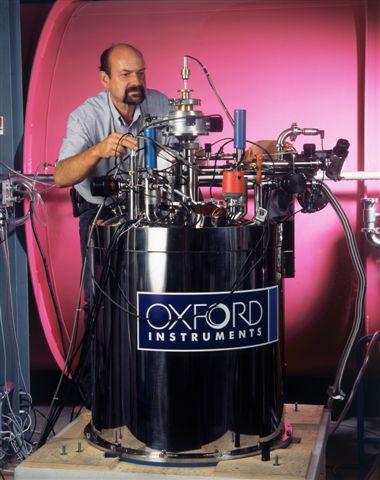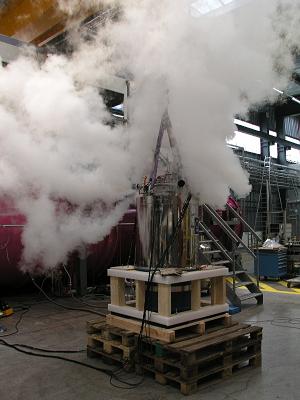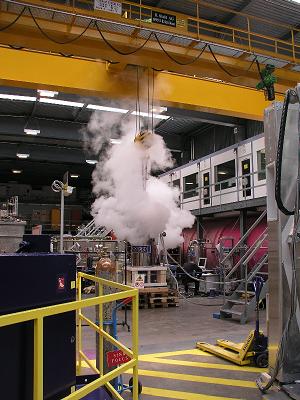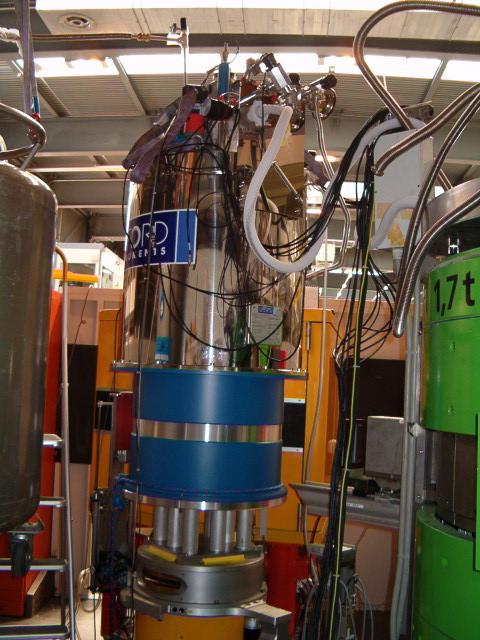
|
MA15 |
|

SINQ LIN LIN
SINQ Wiki
This Page
Referenced by
Wiki Info
JSPWiki v2.0.52
|
The superconducting magnet MA15 was acquired in 2004. It was paid
partly by
14.9 Tesla is the maximum field achievable with nowadays technology for a split pair coil (which is needed for wide angle access). This limit could in principle be increased to 17.5 by means of a dysprosium insert for small samples. This option is not (yet) available at SINQ. A rotatable sample stick has been made at PSI using a similar design at the ILL. This allows to leave the magnet in a fixed omega position and to turn the sample orientation within the magnet.
Restrictions
after several quenches, operation above 12.5 without lambda stage is not recommended see Due to force limits, restrictions are defined for the use of MA15.
More information on intranet page (Drawing): LdmWiki:MA15 Cooldown Procedure?
Pending Issues
Attachments: ma15c.jpg ma15b.jpg ma15d.jpg ma15a.jpg Printer Friendly Page Info This page last changed on 06-Sep-2021 07:26:14 UTC by MarkusZolliker. |



